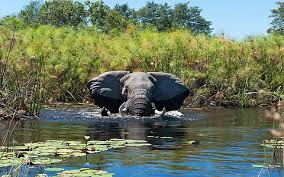Global Wetland Outlook 2025:

The Global Wetland Outlook (GWO) 2025, released by the Secretariat of the Ramsar Convention (1971), highlights that Africa’s wetlands are among the most degraded in the world.
- Wetlands (Seagrass, Kelp Forests, Coral Reefs, Estuarine Waters, Salt Marshes, Mangroves, Tidal Flats, Lakes, Rivers and Streams, Inland Marshes and Swamps, and Peatlands) cover over 1,800 million hectares globally, including inland freshwater, coastal, and marine ecosystems.
However, data uncertainty persists due to inconsistent methods and gaps in historical data. - Since 1970, the world has lost about 411 million hectares of wetlands, marking a 22% global decline at an average annual loss rate of -0.52%.
- Wetlands in Africa, Latin America, and the Caribbean are facing the worst levels of degradation, but ecological deterioration is also rising in Europe, North America, and Oceania.
- Wetlands are in the worst condition in Least Developed Countries (LDCs). In upper-middle-income and developed countries, more wetlands are reported in good condition than poor.
- Wetlands provide food, water filtration, disaster protection, carbon storage, and cultural value.
- The ecosystem service value of global wetlands is estimated at USD 39 trillion. Wetlands make up just 6% of Earth’s surface but deliver ~7.5% of global GDP in value.
- Over 60% of GDP in some African countries comes from nature-based sectors. Wetland loss increases climate risks and lowers productivity. Investing in wetlands is a smart, cost-effective step toward sustainable growth.
- Biodiversity funding is just 0.25% of global GDP, far too low to meet current needs.
Wetlands:
- The Ramsar Convention defines wetlands as areas of marsh, fen, peatland, or water natural or artificial, permanent or temporary with static or flowing water that may be fresh, brackish, or salty, including shallow marine areas up to six meters deep at low tide.
- It also allows inclusion of nearby riparian or coastal zones and deeper marine areas if they lie within the wetland system.




